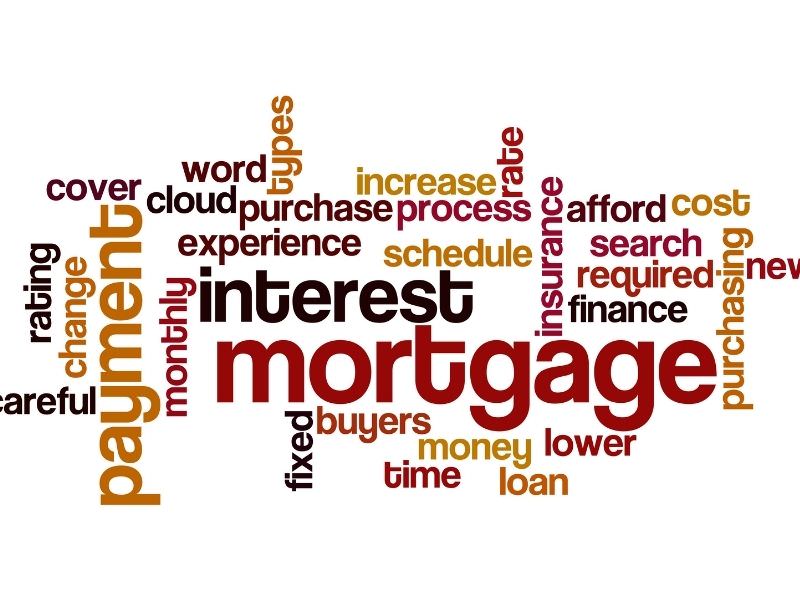How is Your Mortgage Interest Rate Determined by a Lender?
The mortgage interest rate that you are offered by a lender is determined by several different factors. Some may be within your control to help determine and others are not. With knowledge of what factors go into the determination of a mortgage interest rate, you can feel more confident about getting the best competitive interest rate when shopping for a mortgage.
Interest rate factors that you can control
Lenders adjust the mortgage rate that they offer to a particular application depending upon how risky they judge loaning out money to be. The riskier the loan the higher the interest rate will be. When determining the risk of a particular loan a lender considers how likely the applicant is to fall behind on payments or stop making them altogether. They will also look at how much money they could stand to lose should the loan default. Two of the major factors in helping to decide the risk of lending money to an applicant are the applicant’s credit score and the loan to value ratio.
Your credit score
The lowest mortgage interest rates go to applicants with high credit scores. Ideally, lenders would like to see applicants with a credit score of 740 or higher. Applicants with credit scores of 740 or above have the best chances of getting the lowest interest rates and the broadest choice of loan product offers.
Interest rates tend to climb upward for applicants with credit scores ranging from 700 to 739. Borrowers with credit scores from 6:20 to 699 will see even higher mortgage rates. Applicants in the lower range may find it difficult to be approved for some jumbo loan mortgage products. Applicants with a credit score below 620 will see the highest interest rate offers on mortgage loans that lenders will approve them for. Most of these loans will also come in the form of an insured loan or guaranteed loan by the government.
Loan to value ratio
A loan to value ratio measures the amount of money being asked for to be loaned by the lender compared to the home’s fair market value or price. If an applicant makes a $20,000 down payment on a $100,000 house they would be mortgaging $80,000. This means that the borrower or a loan applicant is borrowing 80% of the home’s value so the loan to value ratio would be 80%. The bigger your down payment is the smaller the loan to value ratio will be, a smaller down payment gives a loan a higher loan to value ratio.
The bigger your down payment is the smaller the loan to value ratio will be, a smaller down payment gives a loan a higher loan to value ratio.
If a loan to value ratio is higher than 80% it is considered a higher risk and puts the lender at greater risk in lending out money to the particular borrower on this particular loan. This most often means that the lender looking over the loan scenario will increase the mortgage interest rate especially if this is combined with a lower credit score from the applicant. In many cases, this type of loan will also require the applicant to pay for mortgage insurance as well.
A few other controllable factors
Lenders may also charge higher interest rates for loans such as cash-out refinances, adjustable-rate mortgages, and loans on manufactured homes, condos, second homes, and investment properties. All of these particular types of loans are deemed riskier loans by lenders.
Mortgage interest rate factors you cannot control
The current state of the economy
Typically mortgage rates will rise when the outlook is for fast economic growth, higher inflation, and a low unemployment rate. Mortgage rates tend to decline when the economy is seen as slowing down and inflation is taking a downward trend as well as unemployment rises.
Inflation
Rising inflation is often accompanied by rising mortgage interest rates. When prices go up the dollar loses buying power. Lenders will want a higher interest rate for compensation. Low inflation over the last 10 years has contributed to very low mortgage rates. The 30-year fixed mortgage rate has been below 5% for much of the past decade and historically low over the last year since the beginning of the pandemic.
Job growth
When the job market is not producing enough jobs for a majority of the public then mortgage rates tend to drop. For example, at the beginning of the pandemic, many jobs were put on hold during the shutdowns and mortgage rates fell lower than they have been at any time.
The federal reserve
While the federal reserve does not set mortgage rates the Fed raises and cuts short-term interest rates in reaction to broad movements in the economy. Mortgage rates rise and fall according to the same economic forces. Mortgage rates and federal rates move independently of each other but are most often moved in the same direction.
Mortgage rates differ between lenders
No two lenders are going to have the exact same mortgage interest rate offer for an applicant. While some may have very similar offers it is always a smart idea to shop around because lenders will offer the same applicant a different rate. This helps lenders to stay competitive with one another as well as earn more business to keep themselves in business.
No matter what the current mortgage rate is averaging at it is always smart for any loan applicant to shop around. The best and easiest way to shop for all of your mortgage loan options is to do so through a mortgage broker who can do the shopping for you and save you a lot of time.
For more information on your mortgage options in Orlando or buyer representation in the Orlando area please contact us anytime.
Contact Us Today!
More Tips for First-Time Home Buyers
- How Long Does it Take to Close on a House? A 10-Step Process
- 7 Keys to Getting Your Offer Accepted in a Seller’s Market
- Should I buy New Construction or an Older Home?
- Can I Negotiate Closing Costs?
- 10 Questions to Ask When Buying a Home
- Are House Inspections Necessary?
- Mortgage Options for First Time Home Buyers
- How to Find the Best Mortgage Officer
- 4 Costs You Could Face When Moving From a Starter to a Forever Home


 Back Home
Back Home


Leave a Reply